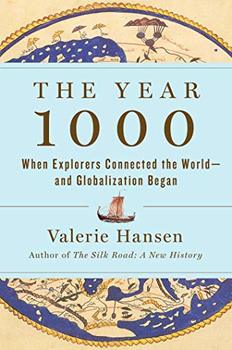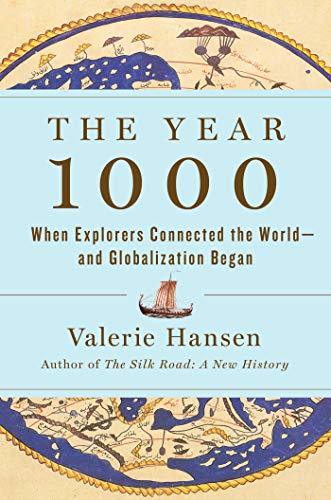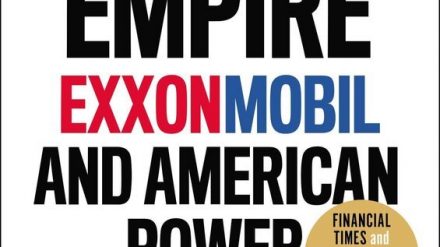
Most historians date the emergence of globalization to the Columbian Exchange, the transfer across the Atlantic of goods, mineral resources, edible plants, slaves, and contagious diseases that began shortly after Christopher Columbus “discovered” the New World. Yale history professor Valerie Hansen begs to differ.
Estimated reading time: 3 minutes
In The Year 1000, Hansen presents a detailed case for backdating globalization to the global upsurge in trade and religious conversions around the end of the first millennium. Her case rests largely on archaeological and documentary evidence of the robust trade in goods that accelerated around the year 1000. It’s a provocative argument, but a little strained. (Others report observing the emergence of globalization centuries before the Common Era—with even less justification.)
The Year 1000: When Explorers Connected the World—and Globalization Began by Valerie Hansen (2020) 313 pages ★★★★☆
Arguing that globalization began with the Vikings in North America
Hansen’s argument rests in part on the evidence of the short-lived Norse settlements along the far northeastern coast of North America beginning in 1000. That the evidence exists is not in dispute. However, because the Norse stayed in the region only a few years and established no lasting ties with the Amerindians who lived there, it’s a stretch to argue that they inaugurated anything like the Columbian Exchange. Globalization is a global phenomenon that required the integration of the New World with the Old. And that took place only in the sixteenth century, not the eleventh.
Archaeological finds and documentary evidence
Still, Hansen makes a valuable contribution to our understanding of the past by highlighting to a greater extent than I’ve found elsewhere the impressive scope of international trade in the closing years of the first millennium and the early years of the second. Citing archaeological finds and the less abundant documentary evidence, she points to the trade routes that linked the peoples of Mesoamerica with those of the present-day United States. Similarly, she points to the robust exchange of goods among the Andean peoples and those of the Amazon region.
Robust Asia trade almost convinces that globalization began then
However, the most extensive trade relations around the year 1000 involved China, India, and the peoples of East Africa, the Middle East, and Southeast and East Asia. Hansen convincingly makes the case that the region we might now describe as that of the Indian Ocean and the China Seas was, in fact, integrated to a degree that affected the daily lives of millions who lived in states along those shores. It’s a colorful story worthy of Marco Polo himself. And it almost convinces that globalization began then.
The West was not a significant factor
Westerners may today be less ready to recognize this story because, at the time, Europe was a backwater. There was interaction between the nascent states of France, Germany, Italy, and Russia, on the one hand, and those of the wealthier and much more advanced societies of the Middle East and Central Asia. But that interaction was limited. The Norse notwithstanding, Europe was not a significant factor in what passed for globalization in the year 1000. If globalization began then, it didn’t involve people who spoke Germanic or Romance languages.
For related reading
You might also be interested in:
- New perspectives on world history
- 20 top nonfiction books about history
- A History of Future Cities by Daniel Brook (Urbanization, globalization and the future of humanity)
Two outstanding books by Charles C. Mann reveal much of the story Hansen tells in The Year 1000 with respect to the Americas:
- 1491: New Revelations of the Americas Before Columbus (Astonishing new evidence about the Americas before 1492)
- 1493: Uncovering the New World Columbus Created (After the Columbian Exchange, nothing was ever the same)
And you can always find my most popular reviews, and the most recent ones, on the Home Page.


























